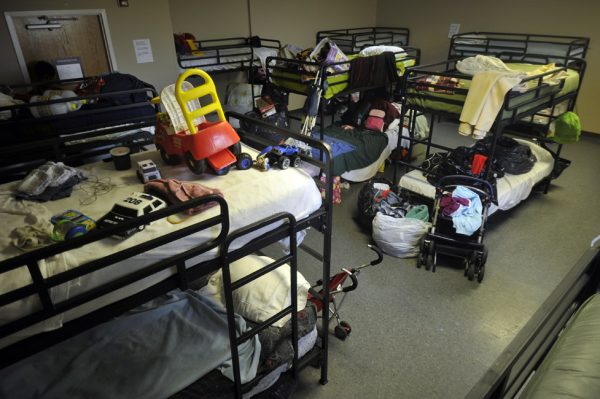Evictions: A vicious cycle for people in poverty

Matthew Desmond has authored a scrupulously researched, stimulating and compelling book that should be of interest to everyone in the apartment industry, every low-income housing advocate, any student of American neighborhoods and every public official.
Examinations of urban poverty are nothing new, but this study of the causes and consequences of evictions on families, housing quality and the fabric of neighborhoods is innovative, thought-provoking, and readable. The author looks to bring this overlooked aspect of American poverty and inequality to a broader audience.
“Evictions = homelessness” is an expression we have heard for some time, and this book gives the reader a first-hand look at how that feels on the ground, as the author follows the lives of housing providers and residents (landlords and tenants) in poor neighborhoods, laying bare the workings of the low end of the market. (Evictions are much more common than previously thought.) It’s often not pretty; the author’s portraits are vivid and unsettling.
Desmond chose the representative American city of Milwaukee as his urban laboratory. In order to “live” his subject, he moved into a trailer park for about five months and then moved into a rooming house in the inner city for nine months. He shadowed two landlords and eight tenant families to capture intimate portraits of the circumstances, court hearings and personal challenges that lead up to, and followed, the eviction process. The book fluctuates between episodes in the lives of these landlords and tenants, along with context about current urban public policy and sociological and legal trends. Desmond (a white man in his mid-30s) is a sociologist and co-director of the Justice and Poverty Project at Harvard and a McArthur “genius” grant recipient. Yet Evicted somehow is able to convey the courage and dignity of desperate people, even those using drugs or selling sex.
Evicted families move into poorer neighborhoods, ones with higher crime rates, and into housing that has more code problems. A lot of landlords (including housing authorities) refuse to take folks who have evictions on their record. The author contends that the difficulty of finding and keeping a roof over one’s head has become “not just a consequence of poverty, but a cause of poverty.”
One finding of the book is that the interruption of eviction – one that is a consuming, stressful, overwhelming experience – causes job loss for households paying 60, 70, 80 percent of income for rent.(Eviction can break a tenuous tie to a job.) One of the most powerful passages in the book was this: “If incarceration had come to define the lives of men from impoverished black neighborhoods, eviction was shaping the lives of women. Poor black men were locked up. Poor black women were locked out.”
[highlight]Domestic abuse victims are in a “devil’s bargain” situation – call 911 and risk eviction or don’t call and risk more abuse.[/highlight]
The author found that about one in five African American women renters report being evicted at some point in their lives, compared to one in 15 for white women renters (a disparate effect). The average age of an evicted child in the author’s study is 7, and eviction robs kids of the security of a home and the ability to invest in their neighborhoods and to stay in school.
Desmond is reasonably even-handed in assessing housing providers (landlords), conveying that their jobs can often be hard and tricky, that they are often sympathetic to their customers’ plight, and that writing them off as greedy or demonizing them moves us away from the harder conversation we need to have. He covers local nuisance ordinances and the tendency landlords have to abate the nuisance by evicting the resident. Women who are victims of domestic violence are put in a “devil’s bargain” situation – they can either choose to call 911 and risk eviction, or not call and risk more abuse.
The book calls for Source of Income protection – provisions that forbid rental discrimination based on the source of income, such as vouchers. (Desmond argues that the current voucher program means lack of choice and poor housing quality.) He also argues for better funded legal services for residents, contending that residents are not on equal footing with their landlords in court. Many in the apartment industry will take exception with some of the author’s advocacy positions, to be sure, including his assertion that there are huge profits at the bottom of the market.
The book advocates for a universal voucher program (“Do we, as a nation, believe that access to stable, decent, affordable housing is a right?”), which would mean everybody earning less than 30 percent of Area Median Income would receive a housing voucher. I found one contention particularly interesting: “Tellingly, countries with universal housing programs (every family below a certain income level is eligible for a voucher) do not have minimum housing standards like America’s limited voucher program does. When everyone in the country can afford decent housing, you don’t need minimum standards because empowered renters can take their voucher elsewhere.”
Ken Szymanski has been in the housing and community development fields for 40 years, including 29 years in Charlotte. His formal training is in city planning, land economics, and public administration. He is executive director of the Greater Charlotte Apartment Association.
